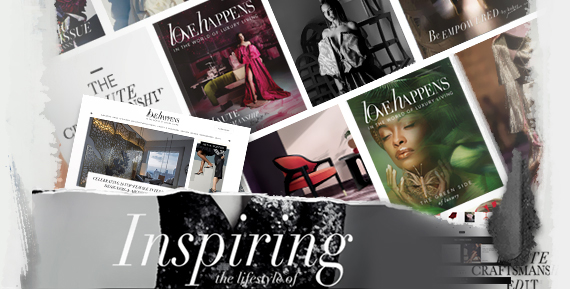The Visionary Behind West Africa’s Most Coveted Line, Maki Oh
Maki Oh, Amaka Osakwe’s narrative fashion line, has ignited a global interest in Nigerian fashion. Her inky lines and tulle tops interrupt Western perceptions of West African clothing, giving them a sui generis twist in the face of traditionally structured and color-blocked garments.
Thanks to the connective power of Instagram, Amaka Osakwe’s whimsical pieces have graced nearly every major source of fashion inspiration, from the closets of Michelle Obama and Lupita Nyong’o down to the corners of our Farfetch wishlists.
Boutique curator Sherri McMullen discovered Osakwe on social media in 2012, kickstarting her upswing and landing her a spot as one of the Business of Fashion Top 500 Fashion Influencers. Osakwe’s work can be found from New York Fashion Week to Beyonce’s Lemonade video. She has been nominated for an LVMH Prize for Young Fashion Designers and invited as the first and only African designer to the “Celebration of Design” at the White House by Michelle Obama.
Although Osakwe’s designs have earned her coveted and rapid success in the fashion industry, her influence extends beyond the seams of her lavender trousers and aso oke skirts (not that it needs to). The young designer’s collections showcase a visual coming-together of Western and African values. She pushes womanism beyond the borders of conservatism, pays homage to Nigeria’s past, present and future and consistently proves to both budding and established artists that dedication, vision, and ethos certainly pay off.
Osakwe’s clear reverence for the intricacies of Nigerian culture — specifically Lagos, her home city — refines and details her garments. Intentional touches of adire here and aso oke there make each collection even more emotive than the last.
Her line collates the complexities of womanhood with the distinct experience of the West African female, offering each of its wearers a feeling of empowerment and strength through visual conversation. Osakwe’s desire for clothing to serve as “a form of communication” is clear in her pieces; Yoruban cloth dying techniques (adire) bring specific meanings to her pieces, allowing each of the garments to speak for themselves.
The inspiration Osakwe draws from the peculiarities of the modern human condition — language, domestication, cultural appropriation, identity and sexuality, to name a few — deepens the purpose behind Maki Oh garments. The integrity of Osakwe’s work and her vision for “cloth [to once again] allow you to make a statement” sets her apart from her contemporaries and makes her one of the most celebrated designers in Africa.












